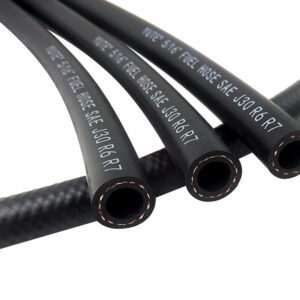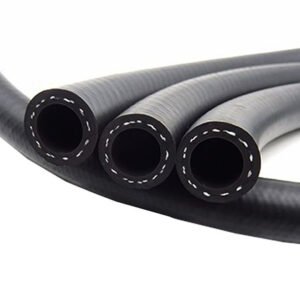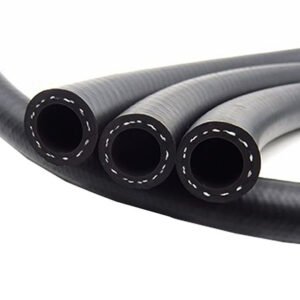Fuel Hose
The rubber fuel hoses, Kinglin manufacturer produce, are a steel wire braided hose. Meanwhile, the rubber hose consists of an inner rubber layer, a steel wire braid layer and an outer rubber layer. At the same time, it is suitable for conveying hydraulic fluid, such as alcohol, fuel oil, lubricating oil, emulsion, etc.
The main feature of (rubber) hose is its bendability compared with hard pipe. Especially, the design of hoses varies according to the operating conditions and performance requirements. Common parameters include size, pressure, weight, length, bending, chemical durability, etc. The application field of industrial hose covers various industrial production, manufacturing and circulation fields. Re-used in petroleum, chemical industry, ship, dock, tanker, agriculture, food, beverage, medicine and other industries. In addition, it is also applicable to hot and cold water, steam, ventilation, cooling, fire protection and hydraulic pressure.
Comparing between rubber hose and PVC
1. Due to the nature of PVC and other plastics as well, they are not well suited to use for fuel gas or kerosene.
2. PVC and other plastics deform easily in high temperature environments, and may leak or rupture.
3. Also, the plasticizers used to maintain the flexibility of PVC melt in the presence of oil, making the hose stiff.
4. If this happens and the hose is forced to bend, the reinforcing threads may break or the hose crack. Finally leading to leaks or burst.
5. In terms of safety, compared with rubber, plastic has a larger space between chemicals. Therefore, when small molecules such as LPG are transported through plastic hoses, gas molecules may penetrate the hoses.
Showing all 6 results





